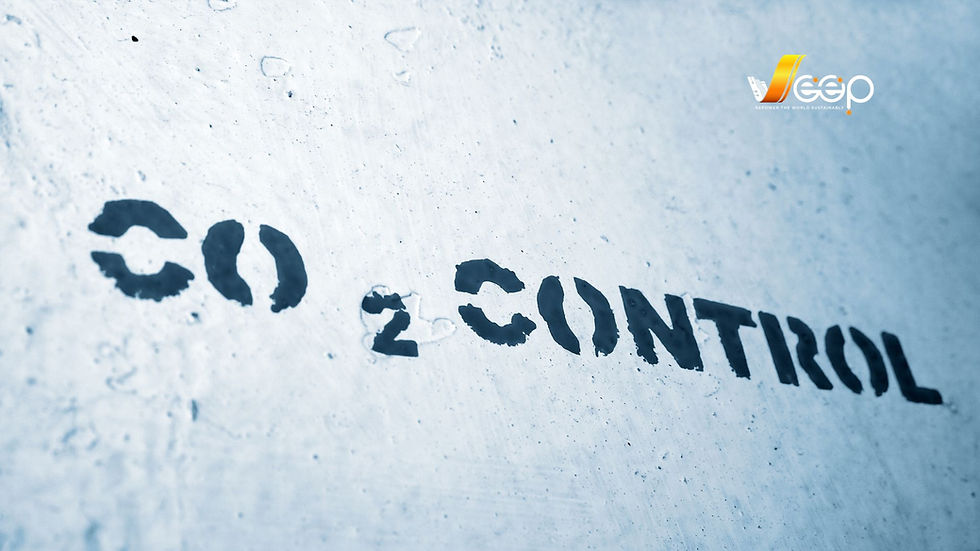What is 𝗖𝗮𝗿𝗯𝗼𝗻 𝗢𝗳𝗳𝘀𝗲𝘁?
- thaotran11
- 8 thg 4
- 3 phút đọc
A carbon offset is a project or activity designed to reduce or remove carbon emissions from the atmosphere, compensating for emissions that are otherwise unavoidable.
Carbon Offsets: Bridging the Gap Between Emissions and Accountability
In a world struggling to balance economic growth with ecological survival, carbon offsets have emerged as both a beacon of hope and a lightning rod for debate. These mechanisms—projects designed to counteract unavoidable emissions by removing or reducing greenhouse gases elsewhere—are reshaping how businesses and governments approach climate responsibility. Yet, as their popularity grows, so do questions about their efficacy and ethics.

The Mechanics of Carbon Offsets
A carbon offset represents a reduction or removal of one metric ton of carbon dioxide (or its equivalent in other greenhouse gases) from the atmosphere, achieved through projects that compensate for emissions generated elsewhere. These initiatives range from reforesting degraded lands and installing wind farms to capturing methane from landfills or distributing clean cookstoves in developing nations.
The principle is rooted in equivalence: If a factory cannot eliminate its emissions, it can invest in a rainforest conservation project to “neutralize” its carbon footprint. This transactional approach underpins both compliance markets (mandated by regulations like the EU Emissions Trading System) and voluntary markets, where companies such as Apple and Shell purchase offsets to meet self-imposed climate goals.
The Rise of Offset Projects: Success Stories and Skepticism
The voluntary carbon market soared to $2 billion in 2023, driven by corporate net-zero pledges. Among the most celebrated projects is Kenya’s Northern Rangelands Trust, which combines wildlife conservation with carbon sequestration by restoring grasslands. Similarly, tech giants like Microsoft invest in direct air capture (DAC) facilities, such as Climeworks’ Iceland plant, which permanently stores CO2 underground.
However, the market’s rapid growth has exposed cracks. A 2023 investigation by The Guardian revealed that over 90% of rainforest offsets certified by Verra—a leading standards body—failed to deliver promised emission reductions. Critics argue that many projects overstate their impact, rely on flawed baselines, or protect forests already under no imminent threat (a practice dubbed “hot air” offsets).

The Ethical Tightrope: Justice vs. Convenience
Carbon offsets sit at the intersection of climate action and social equity. Proponents argue they channel funds to Global South nations bearing the brunt of climate change. For instance, Cambodia’s Cardamom Mountains project sells offsets to protect 1.2 million acres of forest, funding healthcare and education for local communities.
Yet, detractors warn of “carbon colonialism,” where wealthy nations outsource emission cuts to poorer regions rather than overhauling their own systems. Indigenous groups, while often partners in offset projects, frequently lack decision-making power or fair revenue sharing. The 2023 resignation of the CEO of South Pole, a major carbon developer, amid allegations of exploiting Indigenous land in Zimbabwe, underscored these tensions.
Innovation and the Quest for Credibility
To address credibility gaps, the sector is turning to technology. Blockchain platforms like Regenerative Resources Co. tokenize offsets, allowing buyers to trace each credit’s origin and impact in real time. Startups like Pachama deploy AI and satellite imagery to monitor reforestation progress, ensuring trees survive beyond initial planting. Meanwhile, new standards like the Integrity Council for the Voluntary Carbon Market (ICVCM) enforce stricter criteria, rejecting projects that lack additionality—proof they wouldn’t have happened without offset funding.
Nature-based solutions, such as mangrove restoration and soil carbon farming, are gaining momentum for their dual climate and biodiversity benefits. Engineered approaches, including biochar production and enhanced weathering, also show promise but face scalability hurdles.
Offsets in a Net-Zero Future: Tool or Trap?
The Science Based Targets initiative (SBTi) insists offsets should only address “residual emissions” after companies exhaust direct reduction efforts. Yet, many firms treat them as a first resort. Airlines like Delta, for example, rely heavily on offsets while expanding fleets, drawing accusations of greenwashing.
The line between progress and complacency is thin. As UN Secretary-General António Guterres cautioned: “Using offsets as a fig leaf while delaying real emission cuts is a recipe for disaster.” The Paris Agreement’s Article 6, which governs international carbon trading, aims to prevent double-counting and ensure transparency, but implementation remains fragmented.
Carbon offsets are neither a silver bullet nor a scam—they are a imperfect tool in an imperfect system. When rigorously validated and ethically deployed, they can accelerate climate action and uplift vulnerable communities. When misused, they risk perpetuating business-as-usual under a veneer of sustainability.
The path forward demands humility: Offsets must complement—not replace—aggressive decarbonization. As consumers and investors grow savvier, the market’s survival hinges on transparency, accountability, and a unwavering focus on planetary outcomes over profit. In the words of climate activist Greta Thunberg, “We need real zero, not net zero.” Carbon offsets can aid that journey, but only if we tread carefully.
#ESG; #LOW_CARBON; #JODIN; #VIoT; #VEEP; #GIAI_PHAP_NANG_LUONG_SACH; #NETZERO; #NANG_LUONG_XANH; #TOA_NHA_XANH; #NHÀ_MAY_XANH; #SMART_INDUSTRIAL_4; #SMART_BUILDING; #FOOT_CARBON; #CARBON_FOOT; #GREENHOUSE_GAS_EXPERT; #CARBON_ROADMAP; #GRI; #SASB; #DJSI; #SAVING; #LIGHTING; #CHILLER; #ENERGY_EFFICIENCY; #AMIGO; #SOLAR; #BEES; #STORAGE; #REAL_TIME; #EeaaS; #LaaS; #EaaS; #SUSTANABILITY; #RENEWABLE; #SMART_LIGHTING; #MANAGEMENT; #OPTIMIZATION; #ENERGY; #EFFICIENCY; #ESG; #LaaS; #EEaaS; #EaaS; #ESaaS
.png)